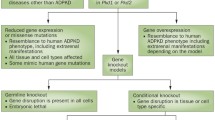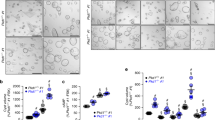Abstract
Polycystic kidney disease (PKD) a is common disease in the human population that can lead to renal failure and death. Taxol has recently been reported to be of therapeutic benefit in the cpk mouse model of PKD. To determine whether these results also apply to other models of PKD, we studied the effects of taxol treatment on the development of renal cysts and biliary hyperplasia/dysplasia/fibrosis in the orpk mouse mutant, a unique murine model for human autosomal recessive PKD. We report no significant differences between the treatment and control groups with respect to weight gain, survival, urine to serum osmolality ratio, and serum concentration of liver enzymes. Moreover, renal cystic development was not affected by taxol treatment in the orpk mutant animals. This was confirmed by lectin staining and morphometric analysis of the renal cysts, which indicated no significant differences between treatment groups. Therefore, while taxol has a positive effect on the cystic kidney disease in cpk mutant mice, this effect is not applicable to all forms of PKD.
Similar content being viewed by others
Author information
Authors and Affiliations
Additional information
Received February 4, 1997; received in revised form and accepted May 30, 1997
Rights and permissions
About this article
Cite this article
Sommardahl, C.S., Woychik, R.P., Sweeney, W.E. et al. Efficacy of taxol in the orpk mouse model of polycystic kidney disease. Pediatr Nephrol 11, 728–733 (1997). https://doi.org/10.1007/s004670050376
Published:
Issue Date:
DOI: https://doi.org/10.1007/s004670050376




